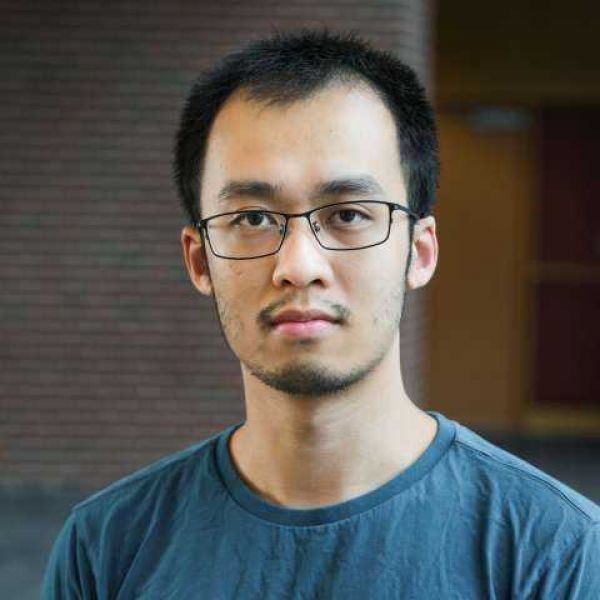Apr 17, 2019
Feiyue Lu Wins Simpson Award for Innovative Research
MCIBS student Feiyue Lu's research into RNA in Drosophila flies was recognized for its complexity, scope, and difficulty.

Feiyue Lu, a grad student in the Molecular, Cellular, and Integrative Biosciences program, has won the 2019 Robert T. Simpson Graduate Student Award for Innovative Research. The Simpson award is intended to recognize grad students working labs of Biochemistry and Molecular Biology faculty members who take take on challenging research projects and succeed.
"Our lab has a long standing interest in transcription, which is a step in gene expression where DNA is copied into RNA," explained Lu. "The major enzyme responsible for this process in eukaryotes such as human is the RNA polymerase II. My research focuses on a repetitive domain of RNA polymerase II called the CTD, which is an essential landing pad for numerous factors involved in gene expression. In yeast, the CTD is made up almost exclusively of consensus repeats. In contrast, the CTDs of more complex organisms have evolved numerous divergent repeats. For decades, the divergent CTD repeats were thought to be crucial for the development of a multicellular organism. However, this idea was never directly tested."
"Surprisingly, my genetic analyses in the fruit fly show that the consensus CTD repeats are sufficient to support normal development. However, too many such repeats are bad. Additionally, the wild-type fly CTD alone can localize to transcription sites, suggesting that the CTD can also function as a signal sequence. In contrast, mutant CTDs with too many consensus repeats tend to aggregate in the nucleoplasm. Together, our results indicate that the divergent CTD repeats might have evolved to counter aggregation."
"I consider myself extremely fortunate to have had Feiyue take the reins on this project," said David Gilmour, Lu's advisor. "I doubt anyone else I’ve ever worked with could have pulled this off. There were times when he was juggling hundreds of vials of flies as he screened for the desired transgenic lines. Even the mutagenesis of the CTD proved challenging because he was dealing with repeated sequences and the plasmids were typically 12 to 15 kb in size. There were plenty of times where he could have dropped the whole project because the results made no sense. Instead, he persevered and has established Drosophila as a ideal system for elucidating the mysteries of the Pol II CTD.”
Feiyue will be recognized at the Robert T. Simpson Memorial Lecture in Molecular Medicine this fall.